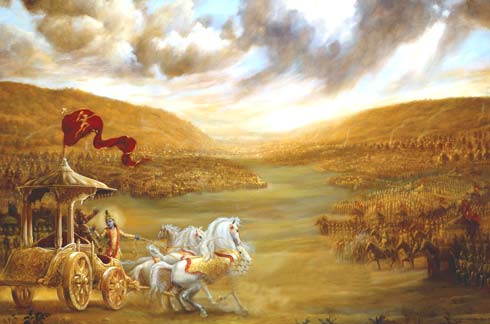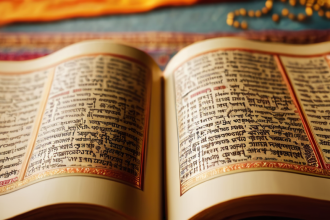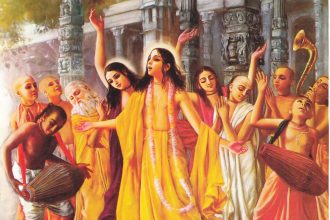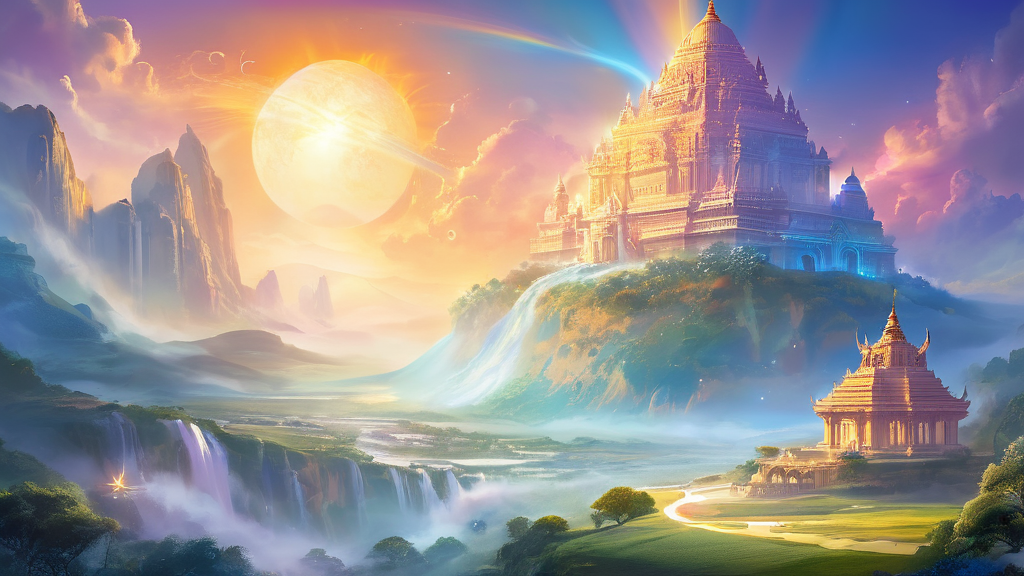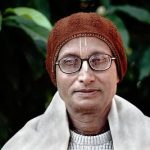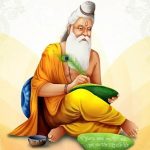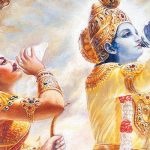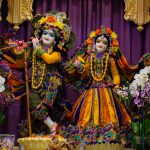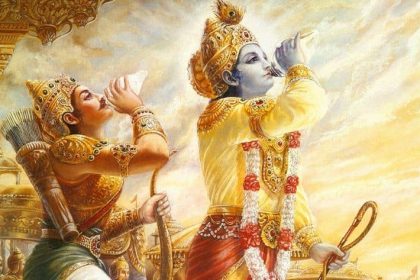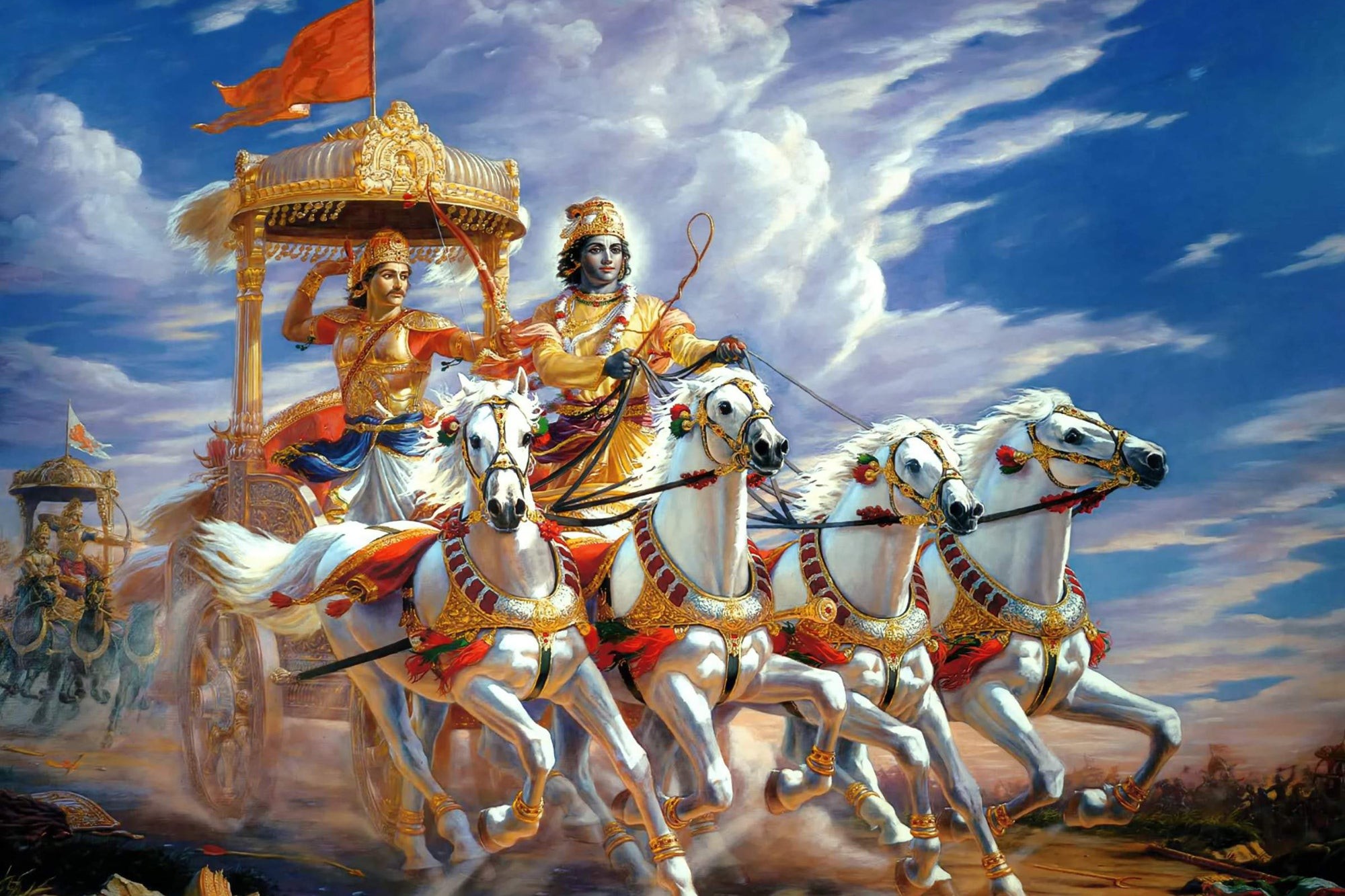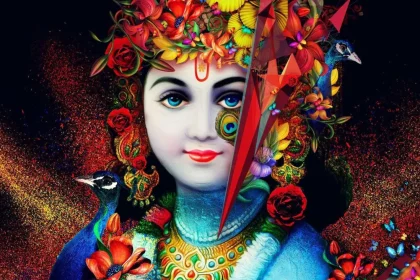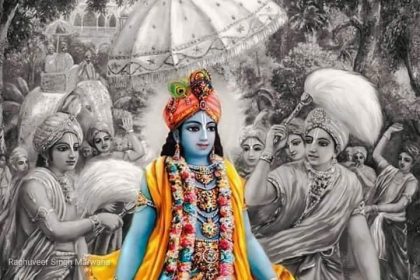Outline
The Bhagavad Gita begins with an inquiry. With the two armies preparing for battle, Dhritarashtra, the father of the Kurus, was doubtful about the possibility of his sons’ victory over the Pandavas (the sons of Pandu). He therefore asked his secretary, Sanjaya, about the situation on the battlefield. Even whilst in the palace, Sanjaya was able to mystically perceive the entire scene and explained everything to the blind king as it happened.
Thus he narrated how Arjuna requested Krishna to steer the chariot between the ranks of the two armies so that he might observe who was present there. Upon seeing so many relatives, friends and teachers in the midst of both parties, Arjuna was overwhelmed with grief and decided to withdraw from the contest. He explained that after killing his own kinsmen it would be impossible for him to enjoy the earthly kingdom. This decision was based on the bodily concept of life, in which he considered his body his very self, and that bodily relations were his brothers, cousins, grandfathers, etc…. In this situation, and to rectify such a mistaken world-view, Lord Krishna spoke the Bhagavad Gita.
In His opening instructions in Chapter two, verse twelve2, Krishna describes the nature of the self as an eternal, conscious being, completely distinct from the temporary, material body. He expounds the science of this eternal self in the following chapters and Krishna’s words constitute the subject matter of the Gita. Such instructions are summarised in the eighteenth and final chapter wherein the Lord gives his final opinion. In the sixty-sixth verse3, Krishna states that the constitutional position and duty of everyone, as an eternal, spiritual being, is to serve Him, the Supreme Personality of Godhead, and as to act as He desires. Although Arjuna initially chose to retire from battle, after hearing Krishna’s instructions, his illusion was dispelled and he resolved to fight.
Dhritarashtra had been hopeful of his sons’ victory. He had been pleased to hear that Arjuna was unwilling to fight. But after hearing and repeating the sacred dialogue, Sanjaya again disappointed him. In the closing words of the Gita, he tells the King, “You are thinking of victory, but my opinion is that where Krishna and Arjuna are present, there will be all good fortune”4. He directly confirmed that Dhritarashtra could not expect victory. Victory was certain for the side of Arjuna because Krishna was there.
Structure
The Gita may be divided unto three parts of six chapters each, as follows:
(a) Chapters 1-6 describe the living entity as a non-material, eternal spirit soul capable of elevating himself to self-realisation by different types of yoga, the highest form of which is Krishna Consciousness (bhakti yoga), as confirmed by the final verse of the sixth chapter. Chapter four specifically deals with the transcendental position of Krishna as the Supreme Personality of Godhead and with the importance of guru and disciplic succession. Since Krishna’s instructions actually begin in the second chapter, chapter one serves as a prelude to the rest of the text. Chapter two is a synopsis of the whole subject matter of the Gita.
(b) In the middle six chapters the Supreme Personality of Godhead and his different energies and opulences are described. This section especially deals with the relationship between the Supreme Soul and the individual soul in regards to devotional service. Krishna also discusses the nature and activities of such pure devotional service which he confirms to be the best process of self-realisation.
c) In the third six chapters, how the living entity comes into contact with material nature, how he is entangled, and how he is delivered by the Supreme Lord through different methods of fruitive activities (karma), cultivation of knowledge (jnana), and devotional service (bhakti) are all explained. The Gita is actually finished in seventeen chapters; chapter eighteen is considered a summary of all previous instructions.
Content
Five basic truths are explained in the Gita, namely:
(1) ISHVARA – the Supreme Controller (Krishna – the Supreme Brahman).
(2) JIVA – the living entity (also called atma or jivatma).
(3) PRAKRITI – material nature.
(4) KALA – time, the duration of existence of the complete manifestation of
material nature.
(5) KARMA – activity (more specifically, material activity)
1 Dhritarashtra said: “O Sanjaya, after my sons and the sons of Pandu assembled in the place of pilgrimage at Kurukshetra, desiring to fight, what did they do?” (B.G. 1.1)
2 “Never was there a time when I did not exist, nor you, nor all these kings; nor in the future shall any of us cease to be.” (B.G. 2.12).
3 “Abandon all varieties of religion and just surrender unto Me. I shall deliver you from all sinful reactions. Do not fear.” (B.G.18.66).
4 “Wherever there is Krishna, the Master of all Mystics, and wherever there is Arjuna, the supreme archer, there will also certainly be opulence, victory, extraordinary power, and morality. That is my opinion.” (B.G. 18.78).


